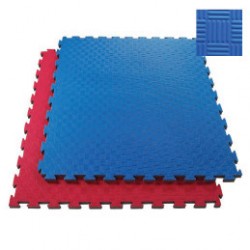The Quest for the Ideal Tatami Judo
If any of us has learned Judo for some amount of time, we have possibly done Judo on different kinds of surfaces. Personally, I have done Judo on the sawdust-covered with canvas, to wrestling mats, to horsehair mats to the latest vinyl-covered Tatami Judo mats available.
Our Judo club decided to renovate the floors after we noticed the foam when our Tatami Prezzo started to break down and our surface was becoming uneven and falls were hurting more the adults specifically.
In our quest for the “Ideal” Judo carpet, I started to carry out some research. I always had the “Go for it” attitude with budget limitations being a major issue. I ended up speaking to a couple of structural engineers, mat manufacturers, gymnastic coaches, gymnastic floor manufacturers, and many others about the issue.
A Tatami Arti Marziali will only compress a specific percentage of the material itself depending on the density if laid on a hard surface like a concrete floor. This frequently leads to injuries as the mat themselves can’t absorb and break up the energy from a fall. In Judo, it is important to have a subfloor system that can absorb the impact of a 200-pound person falling above the head as if they are thrown away.
The sub-flooring system which I mentioned as the floor system from this point on was the biggest challenge. The only floors I have witnessed are a hardwood floor mounted on progressive rate springs in Japan. The progressive rate spring floor was incredible but extremely costly. The springs have different rebound and compression rates which is quite vital. The manufacturers of the Tatami Judo will tell you that these mats are not designed to take the impact of a Judo throw on a concrete floor; hence a “sprung” floor is required so that the mats are not absorbing 100 percent of the impact and a firm surface is still maintained.



Comments
Post a Comment